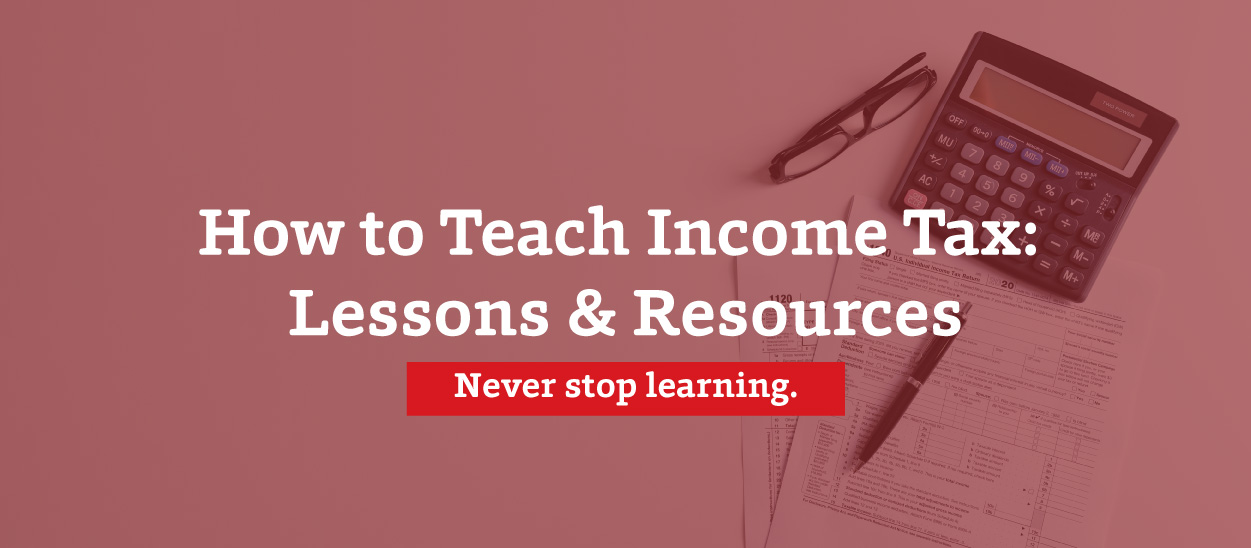Adolescence is the perfect time to start teaching taxes—what they are, how they work, why we pay them, etc.
Taxes can seem complex and confusing, especially since they are filed differently based on income and lifestyle. However, students need to learn the basics of taxes early on so that they can understand the concept as adults.
5 Activities That Will Make Teaching Taxes Easy
These activities will be a great way for you to assist your children in preparing for their future taxes. With your guidance, they will quickly learn how to fill out W4s and file taxes.
Activity # 1: The Token Economy System
Just like a classic rewards system, the Token Economy System allows students to earn tokens in exchange for positive behavior, volunteering, or completing chores. These tokens can then be used to redeem exciting rewards like a candy bar or a new notebook.
A system like this provides a straightforward way to introduce the concept of taxes. Simply explain to the students that for every 10 tokens they earn, they are required to contribute one token as a service fee or tax. It's important to clarify to each student how this tax will be utilized—each token contributes to purchasing classroom supplies and enhancing the gifts they can buy in the future.

Activity # 2: Filling Out a W4
Do you remember your first job and how overwhelmed you felt when they handed you a form and asked you to fill it out? Just like how you felt, most teenagers aren't sure how to fill out a W4. Here’s how to go about teaching this:
Step 1: Explain to your students what a W4 is—a form that employees need to fill out before starting their employment so that their employer knows how much federal income tax should be withheld from their pay.
Step 2: Download this Banzai W4 Worksheet that lets students practice filling out a W4 form without the need to include their personal information.
Step 3: Have students experiment with this Federal Income Tax Withholdings Calculator by giving them a list of hypothetical incomes and filing scenarios so they get a good idea of how much tax is withheld.
What is the difference between a W4 and a W2?
A W4 is filled out by an employee at the beginning of a job so the employer knows how much tax they should withhold from the employee’s paycheck based on each employee's filing status. A W2 is given by an employer to their employee at the end of every year to show how much that employee made and how much money was withheld from their paycheck for taxes.
Activity # 3: Save Your Receipts
One clever way to showcase the concept of sales tax is by handing children a sales receipt and demonstrating the amount of tax they owe after making a purchase. It's crucial to explain to your students that sales tax varies among different states and is put to good use by supporting important local community initiatives such as education, law enforcement, firefighting, healthcare programs, and much more.
Activity # 4: Practice Filling Out a Tax Form
The IRS has an abundance of helpful resources when it comes to the ins and outs of filing taxes. On their website, they offer a plethora of forms that can aid students in practicing and comprehending the tax filing process. So, here's how you can get your students started:
Step 1: Print out the 1040 form—one of the official documents used to file taxes—and pass out the empty forms to your students.
Step 2: Explain to them the important sections of the form.
Step 3: Let them practice filling out the information.
Step 4: If you think it could be helpful, the IRS provides a 1040 fill-out instruction booklet to use when filling out the 1040 form.
Activity # 5: Calculating Tax Brackets
One clever way to help kids grasp the concept of tax brackets is by having them explore different careers and calculate how their salary would be divided among the various tax brackets. The IRS website is a handy resource for them to check out the current year's marginal tax rates—you could even provide them with a printed chart for reference.
Explain to students that tax brackets mean you pay a different tax rate for each portion of your salary. To help kids understand this concept:
Step 1: Ask them to draw 6 squares on a piece of paper and assign each of the six boxes a rate—35%, 32%, 24%, 22%, 12%, and 10%.
Step 2: Next, tell them to research a career that they're interested in and write down the beginning salary.
Step 3: Then have them designate what amount of salary should be placed in which percentage box.
Example: Let's take a US salary of $51,000. Here's what $51,000 would look like when broken down into corresponding tax rates: $9,950 should be placed in the 10% box, meaning that amount of income will be taxed at that rate, $40,525 should be placed in the 12% tax bracket box, and the final $525 should go in the 22% tax bracket box.




